
Thirteen Grandmothers from indigenous communities in the Americas,
Nepal, Tibet, Africa, and Japan came on stage to open the Bioneers
conference this morning, each one sharing a blessing in her own language – for the earth,
its creatures and all of humanity, including the 13,000 individuals
gathered here in San Rafael or viewing the program by satellite feed.
In her opening talk, Nina Simons expressed the commitment she has personally made to address her own embedded racism and encouraged us all to stay awake throughout this gathering and challenge our assumptions, reminding us that in order to be the “carriers of a new story that will help seed the restoration of a loving world”, we will all need to make some changes.
Kenny Ausebel’s introduction to the plenary sessions focused on hope and systemic solutions that prove evolution favors the resilient, those who are able to adapt and change.
Jay Harman
Australian Jay Harman is the impressive CEO of bay area alternative energy firm Pax Scientific, which looks to Nature for energy solutions. Harman used an extraordinarily beautiful video to illustrate how the spiral is nature’s key to smarter energy design while three of is scientists showcased models of this spiral applied in fans, boats, and items designed for the water treatment and industrial mixing industries.
Judy Baca
Award-winning Mestizo muralist and public artist Judy Baca, whose work chronicles the political landscaping of California, was next. “It all started with a river”, she said, reminiscing about the ‘hardening of the arteries’, or concretization of the Los Angeles river that happened during her childhood.
This act of violence against the community eventually resulted in a half mile of artistry – a mural illustrating the history of the community it had disrupted. The project, led by Baca, was created collaboratively over a period of several years by young people within the effected communities. This mural, which lines both sides of the concrete river, is now recognized and celebrated as a site of public memory. That history is not yet finished, with youth groups now planning a “green bridge” across the river made of channel waste material and lit by solar panels.
Destiny Arts – the fabulous youth art troupe from Oakland who premiered at Bioneers last year – were back for a brief performance, and their beautifully choreographed dance moves were even more impressive this year.
Judy Wicks
The next plenary session featured Judy Wicks, social food activist and owner of the famous White Dog Café in Philadelphia, who talked about how ‘beautiful’ business can be. “Business is about relationships” she said, “my business is the way I express my love for the world”.
Spectacularly successful, Wicks made a conscious decision to remain small and expand in relationship and community activism rather than pursue ever-greater economic gains, and her innovative approach extends from her restaurant’s almost unique labor practices and benefit packages to cruelty-free organic food sources, sustainable waste management, extensive local, national and international activism and community celebrations.
What an incredible inspiration to see what a woman can do with a restaurant and the heart and mind to make it much, much more than that.
John Abrams
Green architect and founder of the employee-owned residential design and building firm South Mountain Company, John Abrams was next with another story of hope and transformation. He and a few friends started by building homes in Vermont for $500 each before eventually returning to his home town in Martha’s Vineyard where he continued building homes for not much more – ‘subsidizing homes for the rich’, as one of his friends described it.
He wasn’t making much money, but that apparent failure was part of Abrams’ initial impetus to invest in the idea of an employee-owned workplace.
That, and the inherent injustice and unsustainability of our current economic model fueled Abrams’ new economic vision and eventually led him to distribute the money and power in his business to all his employees. This model not only galvanized Abrams’ business into a spectacular success story, but inspired a positive business model which can transform the way we work.
Van Jones
Fabulous as the morning line up had been up to that point, social justice luminary Van Jones, co-founder and Executive Director of the Ella Baker Center, was the uncontested star of the day. Charismatic, generous and entertaining, Jones talked about how environmentalism has been the ‘nice (“white”) face’ that can open the door for long-needed social change, change that the harsher black face of social injustice has been unable to shift.
As the environmental movement moves from the margins to the center of mainstream culture, Van Jones challenges us with a question about who we are going to take with us, and who is going to be left behind.
Using his increasingly famous Fourth Quadrant slideshow (“the presentation Al Gore would do if he were black”), he walked us through an overview of the environmental movement up to now and show us a possible future. In a line from the Grey phase of problems on the left of the page to the Green of solutions on the right, we cross the unseen line of race, class, and gender. This line is often invisible, but when we include it, it creates a grid of four quadrants.
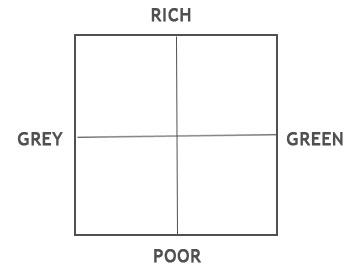
In the top left, in the quadrant of Rich and Grey, we have the problems of species loss, which is of course true, while in the lower left we have problems of human loss and degradation, no less true.
In the upper right quadrant, of Rich and Green, we have wonderful solutions – Priuses, solar panels, and Whole Foods (Whole Paycheck for anyone outside of Marin, Jones quips :-). Ultimately this area consists of business opportunities for rich people and consumer choices for the affluent. This is a good thing, too, Jones says. We WANT people to be investing in this area, and making better choices, but what about those who can’t afford a Hybrid, who are struggling to find rent – is there a place for them in the Environmental movement? In the lower right quadrant is where we begin to deliver the health and work benefits of the Environmental movement with Green-Collar jobs like the People’s Grocery, in Oakland, or the Solar Richmond project.
The moral challenge of the Environmental movement, Van Jones contends, is to bring the green economy to those who most need the advantages it can bring, the youth of color that would otherwise be jail fodder. “You save money, that young person’s life and the soul of this country”, he declares passionately; “in the green economy we don’t have any throw-away resources, throw-away people or throw-away neighborhoods.”
After lunch I attended my first afternoon session, HotFrog Presents: Writing the Revolution.
The session was led by Laurie Lane-Zucker, co-founder of Orion magazine, former publisher and editor of Mother Jones Mark Dowie, and authors Eddie Yuen and Rebecca Solnit.
Lane-Zucker began by recounting a meeting with Paul Hawken after last year’s Bioneers where he proposed starting an online magazine that would complement Hawken’s work in Blessed Unrest.
Trying to think of a name for the magazine, for a metaphor that would do justice to the power and scope of Paul’s idea, Laurie Lane-Zucker went on a vision quest into ‘dreamtime’ with some friends. In dreamtime, they went down to the water and took off their clothes, because “you have to be naked for this work”, he explains, and they dived way, way down deep to the place where the earth’s plates are separated and they crawled inside… found themselves a table, lit some cigars and started to think. Gaia … ? (not urgent enough) … The Lemming … ? (urgent enough, but a little suicidal). And then someone surfaced the idea of the frog who sits in the water, even as it begins to boil around him … That was it! Hot Frog!
They needed an image to illustrate the metaphor, because that’s just how it is, so Laurie called an old friend, who happened to be a branding genius, and tasked him to come up with an image that was as beautiful and powerful as the concept they’d revealed. They were looking for an image of a frog that is active, spiritual, totemic; a frog that represents metamorphosis.
With the context set, Lane-Zucker shared his vision for HotFrog as “storying the movement” – giving the power to tell the story to the people, yes, but without forgetting the Writer, who he says was born to tell a particular kind of story. With that he introduced the first of the writers presenting in the session, Rebecca Solnit.
Solnit spoke about the original meaning of revolution as ‘coming around’, cycling’, rather than the ‘great change’ that it has come to mean in our time, and of her view of a ‘revolution‘ that speaks a language of creativity rather than conflict, to tell the stories that are needed now to combat despair & discouragement.
Eddie Yuen picked up her narrative by distinguishing between “lumpers” and “splitters”. The movement of movements, for example, where diversity is a strength, is a “lumper’. But there are times when it is helpful to clarify who is NOT in the movement of movements, in the case of green-washing, for example. He hastened to add that social movements are not reduce-able to the organizations which at times claim to represent them. Movements do not have organizations, he continued, they have the ability to disrupt organizations, and power.
As a writer and wordsmith, Mark Dowie expressed concern with the categorization of Hawken’s database on Wiser Earth as a “movement”. In Dowie’s eyes these groups are making big changes, but they are not yet a movement, rather the grassroots beginnings of movements. He admits that to connect and network them is crucial work, but says we are kidding ourselves if we think that a database in itself is a movement. What creates a movement is a mission, he goes on to say, and there are a lot of different missions represented in those groups. Later, in answer to the question of what would make it a movement, he says “a common enemy”, or the recognition that they were all against the same thing.
I couldn’t keep my hand down at this point, because to my mind we are present at the birth of a new and different kind of movement, a movement of movements, whose very essence is an acceptance of diversity and cannot possibly be defined under one unified “mission” in the old sense. I also believe that groups can unify around a positive goal with diverse manifestations, rather than a common enemy, which again seems like an old model. I love Orion, so I will withhold judgment until I have seen hotfrog, but the conversation with Dowie, who will be the managing editor, did not give me confidence that he understands the new emergent model very well.
In my second session of the afternoon, Sam Bower, founder of GreenMuseum.org (whose business cards are printed on leaves) chaired a panel called EcoArt Strategies: Towards a Culture of Sustainability.
Starting by sharing the genesis of the green museum as an online resource for art that would not have otherwise been accessible, Bower gave us a brief overview of some of the diversity of environmental art forms that have emerged from the 60s through today.
Before introducing the first artist on his panel, Sam explained that the work of the Green Museum revolves around a series of assumptions – that art is a tool; collaboration makes projects that are more effective and longer lasting than individual work; and sharing information about art can influence and lead to new works.
With that he gave the floor to Susan Leibovitz Steinman of WEAD (Women’s Environmental Artist’s Directory), who took us through a project she did in Sonoma County on wild apples.
Next up were Canadian artist Nancy Bleck and her native colleague Hereditary Chief Bill Williams of the Skwxwu7mesh Nation. Tomales’ place-specific work is in bringing the Long House of his culture – teachings with an elder trained to speak what needed to be said – out onto the land.
Nancy spoke about looking at the land through indigenous eyes and the protocols that must be honored in order to “be” with them in a respectful way.
Daniel McCormick’s “erosion control” sculptures provide a public art experience in unlikely places. He works in West Marin, using materials from local watersheds, contoured in ways that work with the streambeds they came from in order to benefit it in some way; trap and reduce silt build-up, for example.
Co-founder of the online journal LAND, Anne-Katrin Spiess gave an overview of her ways of working, which include getting lost and driving until she comes to places she describes as ‘nothing’, and described a few of her projects including The Thinking Box, a semi-transparent space where one sits in contemplation and basically does ‘nothing’ in glorious outdoor spaces, Rock Bed, Tree Bed: Homage to Julia Butterfly Hill, and her latest which was a well-chronicled cross-country bicycle trip.
The questions were a little disappointing to me, having to do with whether or not art is ‘useful’ like a tool that is made in response to issue or if it is art as individual expression. That also seemed to me to be an old dichotomy without much real relevance.
On my way to dinner I got a wonderfully useful tour of Google Earth with a couple of new ideas about how to apply it for my clients. Afterwards we were entertained by the Urban Apache and the B Boys. Here’s a little clip I managed to catch on my cell phone:
After Urban Apache, we were all graced by the sound of soulful poet Jahan Khalighi, who is one of my favorite performance artists. He is so deep and beautiful. This one was dedicated to his grandmother, who though he didn’t mention it, is the legendary choreographer and dancer Anna Halprin.

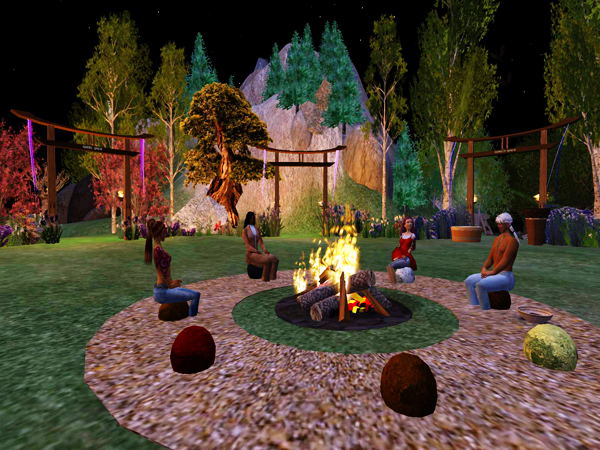
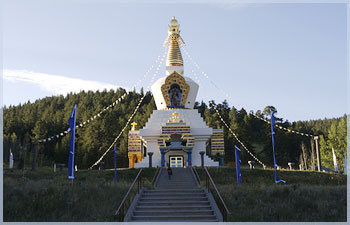
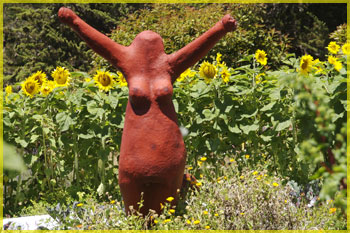
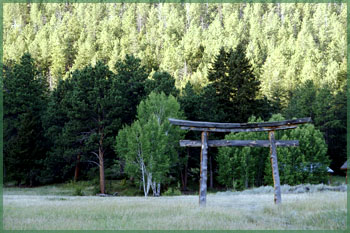

Welcome!